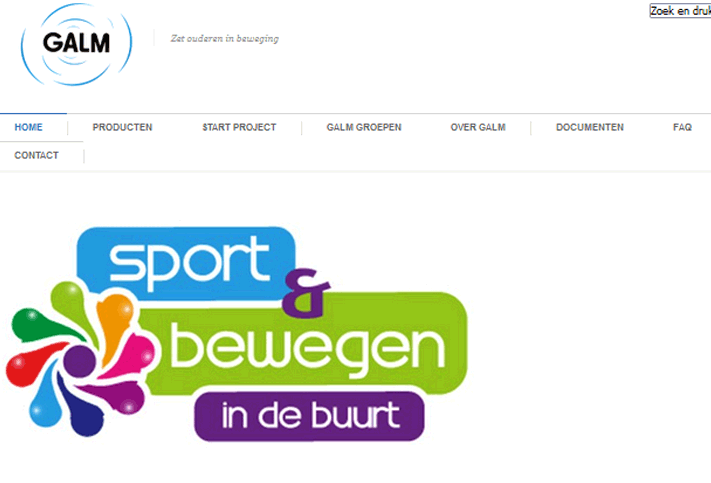
| Short descriptor of good practice |
| The Groningen Active Living Model (GALM) is a behavioral change strategy for stimulating participation in leisure-time physical activity. It is a process model of behavioral change in which behavioral change is seen as a multidimensional and dynamic process. The strategy has three phases: recruitment, introduction, and follow-up, and lasts 18 months. The GALM strategy is a feasible strategy for stimulating leisure-time physical activity participation on a large-scale basis. |
| Type of setting where good practice is delivered |
| NGO, Adult Education, Private |
| Time Frame for delivery of good practice |
| 6 months period The structure of each GALM session: (1) a 5–10 min warm-up period; (2) 20–25 min of skills-practicing in which the exercises offered were differentiated for the level and needs of the participants, using adapted materials when necessary (e.g. foam balls); (3) 20–25 min of playing in which the skills learned and practiced were applied in the context of a game or other activities; (4) 5–10 min of cooling-down consisting of flexibility and relaxation activities. All sessions were conducted in groups of 15–24 participants and held in a gymnasium located in or near neighborhoods participants lived in to avoid barriers like traveling distance. |
| Type of learner the best practice is supporting |
| Older adults aged 55-65. |
| Resources used as part of good practice |
| The Groningen active living model (GALM) – more application in different programs/groups. More research available at https://www.galm.nl. This research: https://www.galm.nl/wp-content/uploads/2013/12/Six-months-effects-of-the-Groningen-Active-Living-Model.pdf |
| Aims and objectives of good practice |
| Objective: To determine the effects on energy expenditure, health and fitness outcomes in sedentary older adults aged 55–65 after 6-month participation in the GALM program. |
| Evidence as to why this was considered good practice |
| The Groningen Active Living Model (GALM) provides a comprehensive, evidence-based, and community-oriented approach to promoting physical activity and active living, particularly among older adults. Holistic Approach: GALM takes a holistic approach to active living, addressing not only physical activity but also social, psychological, and environmental factors that influence an individual’s ability to stay active. It recognizes the interconnections of various aspects of well-being. Community Engagement: GALM often involves community-based initiatives and partnerships. It acknowledges the role of communities in creating supportive environments for active living, fostering a sense of belonging, and encouraging social interaction. Educational Component: GALM incorporates an educational component to raise awareness about the benefits of physical activity, dispel myths, and provide information on how individuals can incorporate active living into their daily lives. Sustainability: GALM often emphasizes sustainable interventions and changes in behavior. By addressing both individual and environmental factors, it aims to create conditions that support long-term active living. |
| 3 Key learning Principles that were used in this good practice to support senior learners |
| 1. Active Engagement 2. Gamification 3. Social Learning Theory |
| Any additional learning that we can take from this good practice example |
| Several studies were made on GALM, where substantiation of the methodology, the approach strategy, the fitness test and the effectiveness have been researched. Relevant links: https://pubmed.ncbi.nlm.nih.gov/10547052/ https://www.galm.nl/over-galm/publicaties-materialen/ |
| Any Additional Information |
| / |
